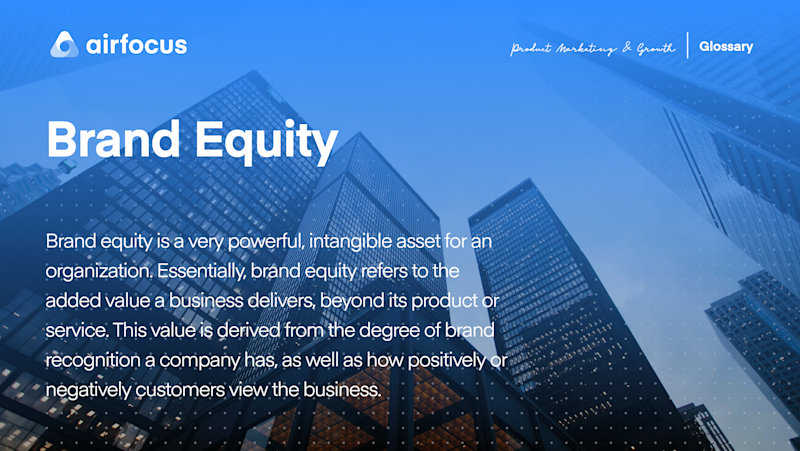Brand Equity
What is brand equity?
Definition of brand equity
Brand equity is a very powerful, intangible asset for an organization. Essentially, brand equity refers to the added value a business delivers, beyond its product or service. This value is derived from the degree of brand recognition a company has, as well as how positively or negatively customers view the business.
If people think highly of a brand, then that increases equity. On the other hand, if the brand has a bad reputation — or suffers a dip in trust or favor — then this can damage brand equity.
Brand equity, good or bad, can also extend to associated partners and companies.
How can you build brand equity?
High brand equity enables a company to charge more for their product or service and helps increase the commercial value of an organization in terms of stocks and shares.
So if you are a new, or struggling, business, building positive brand equity should be a primary strategic goal.
But equity isn’t built overnight.
Firstly, you need to know what your brand stands for and the value it delivers to customers. Then, you must commit to reinforcing this message — through design and marketing — and, of course, continuously deliver a quality experience to your customer base.
Examples of brand equity
Brand equity should not be confused with brand recognition. Some very recognizable brands carry negative brand equity.
Uber is a good example of this. Whilst well-known, the brand has hit the headlines for all the wrong reasons over the past few years.
Although things may have turned a corner now, Uber’s valuation dropped from $70bn to $48bn in 2018. And, between their IPO in May 2019 and November 2019, their share price slumped from $41.57 to $26.79.
The SaaS space contains many examples of brands with strong positive brand equity like Salesforce, HubSpot and Adobe. Salesforce has especially high brand equity thanks to the efforts of Marc Benioff in reshaping the role of the modern CEO.

General FAQ

Glossary categories
Create effective product strategy

Experience the new way of doing product management








